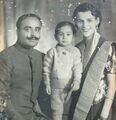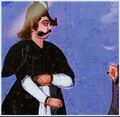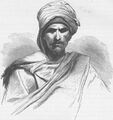Hathras
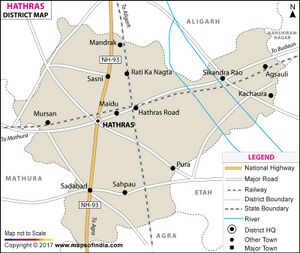
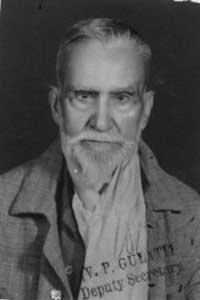
Hathras (हाथरस) is a city in Hathras district in Uttar Pradesh. The Hathras district, formerly known as Mahamaya Nagar, was created in 1997 by incorporating parts of the Aligarh, Mathura and Agra districts. It was given the alternative name Hathras district shortly after. Hathras lies within the Brij region, associated with the epic Mahabharata and Hindu mythology. Hathras is connected by a light railway with Mathura, and by a branch with Hathras junction, on the East Indian main line.
Location
Hathras is located at 27°36′N 78°03′E / 27.6°N 78.05°E / 27.6; 78.05. It has an average elevation of 185 metres (606 feet). As of 2001 India census, Hathras had a population of 123,243. Males constitute 53% of the population and females 47%. Hathras has an average literacy rate of 60%, higher than the national average of 59.5%: male literacy is 66%, and female literacy is 53%. 14% of the population is under 6 years of age.
Tahsils in Hathras district
Villages in Hathras Tahsil
Aharai, Ahbaranpur, Allahpur Chursen, Amarpur, Ani Garhi, Anuruddhapur, Arazi Saer Kehari Singh, Arjunpur, Bad Nagla Athwaria, Baghana, Baghau, Baghraya, Baguli Kamalpur, Bairisala, Balna, Bamauli, Bamnai, Bandipur, Banka, Baramai, Baramai, Barauli, Bardwari, Barwana, Belwari, Bergaon, Bhadamai, Bhagatua, Bhakari Nagla Bhoja, Bhilokhari, Bhogaon Nagla Jayas, Bhojpur Khetsi, Bhopatpur, Bhudari, Bhutiya ka Nagala (Sadabad), Bichhia, Bichpuri, Bidhipur, Birnagar, Bishundas, Bisrant, Bonai, Budh Nagla Hemraj, Bul Garhi, Chachpur Bhatela, Chamar Patti, Chamar Pura, Chand Garhi, Chandapa, Chaukra, Chhatarpur, Chhotua, Chintapur, Chintapur Badan, Chitawar, Dadanpur Dhakpura, Dargawan, Darkai, Darshana Mutfurkat, Darshana Ta Gubrari, Dataura, Dayalpur, Dengra, Devinagar, Dhatura Kalan, Dhatura Khurd, Ehan, Faujia, Gadai, Gambhir Patti Bisana, Gangchauli, Gangoli, Garaw Garhi, Garh Hathras, Garhi Balna, Garhi Dharu, Garhi Dudha Dhari, Garhi Girdhara, Garhi Jaini, Garhi Kachhwaya, Garhi Khurti, Garhi Parti, Garhi Singha, Garhi Tamana, Gijrauli, Gojia, Golnagar, Gopalpur, Gopi, Gubrari, Gumanpur, Gwarau, Hajipur, Haraila, Hathras (MB), Hathras (Dehat), Hatisa Bhagawantpur, Himmatpur, Hira Garhi, Jafrabad, Jahangirpur, Jaitpur, Jalalpurt Shahjadpur, Jatoi, Jhingura, Jind Patti Bisana, Jogia, Kachhapura, Kailora, Kaimar, Kakori, Kakrawali, Kalwari, Kanchana, Kapura, Karil, Katailiya, Katharia, Keshar Garhi, Keshopur, Kewal Garhi, Khajuria, Khargu, Kharwa, Khera Chaturbhuj, Khera Parsauli, Kheria Asha, Kheria Dahar, Kohan (Mursan), Khokia, Khonda Hajari, Khondarati, Khutipuri, Koka, Korna Chamarua, Kota, Kumarpur Nagla Bans, Kumrai, Kurar, Kuravali, Lahra, Lakhnu, Lakhupura, Lalpur, Larpur, Luheta Khurd Kalan, Magtae, Mahamauni, Mahokhas, Majhola, Maleh, Man Maho, Mathu, Mauhari, Mehmudpur Brahaman, Mehmudpurjatan, Mendu (NP), Mewali, Mirzapur, Mitai, Mitanpur, Mohabbatpura, Mohanpur, Mugaria, Mungsa, Mursan (NP), Nagala Adu, Nagla Alia, Nagla Amra, Nagla Anta, Nangla Ani, Nagla Babu, Nagla Banarsi Prahlad, Nagla Bihari, Nagla Bihari, Nagla Dana, Nagla Dauda, Nagla Daya, Nagla Dhaurpur, Nagla Gajua, Nagla Hira Singh, Nagla Imaliya, Nagla Keson, Nagla Khargu, Nagla Kuvarji, Nagla Lacchhi, Nagla Man, Nagla Mani, Nagla Motirai, Nagla Nandram, Nagla Nandu, Nagla Ojha, Nagla Ramrai, Nagla Sadak , Nagla Shisham, Nagla Soron, Nagla Tajana, Nahrai, Nahroi, Navipur, Noorpur, Padu, Paharpur, Paikwara, Painthgaon, Parsara, Partap, Pataini, Patta Khas, Patti Samant, Pavloi, Pharsauti, Phuskara, Pubaina, Punnar, Pura Khurd, Purakalan, Rajpur, Ram Nagla, Ramgarh, Rangpura, Raravali, Ratan Garhi, Rayak, Rohai, Rudrapur, Rutvangarhi, Sainpur, Sangila Nagla Bari, Santikara, Sarai Amar Singh, Sarkoria, Sethrapur (Govra), Shahjadpur, Shahpur Kalan, Sheikhupur Madan, Sherpur, Siamal, Sikandarpur, Sirua, Sithrauli, Sitla Mewa, Sokhana, Songra, Sukha, Sundhia, Suratia, Suratpur, Susavali, Tajpur, Tarphara, Tasinga, Tehra, Tihaiya Nagla Karwa, Tilokpur, Timrali, Tiparas, Tuksan, Udaibhan Bhakroi, Vahanpur,
History
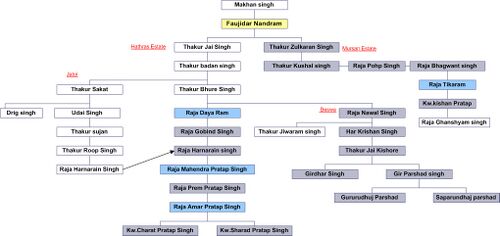
While the history of the city dates back to ancient times, it also appears that there was an ancient fort in Hathras at the site of the ruins of the modern day fort. There are traces of ancient Jain sculptures also in Hathras.
According to a story of Chotoo Banmali’s “Gokul Mahatm” at the time of the Birth of the Lord Krishna , Lord Shiva-Parvati arrived the Brij from this rout and the place where Parvati halted was called the Hathrasi Devi. Probably as the place of Hathrasi Devi this place was called Hathras.
Early History
Archaeological remains of Hindu , Buddhist , Jain culture and also of the Shung and Kushan period were found at many places in Hathras. Among these archaeological and historical places is the fort of Raja Dayaram located in the Hathras town from where Maurya period Brown coloured pot of 2nd century B.C., Kushan period clay statue ,”Sapt Matrikafalam” etc . were found. Among old Temples the temple of Lord “Veereshwar Mahadev” is special . Shaiv rulers and Naag Rajas also dominated here , remains of there rule are scattered here and there .During the period of Naag Rulers Seshavtara Lord Balram Ji got proper importance and his temples can be found in all of the region . Old broken statues which have great archeological value are still worshiped in the Brij region. The archeological remains and statues obtained here are kept in the Mathura Museum . The Jain Temple at “Nayawaas” tells the story of Jain Culture .Sanwat 1548 “Vi.” is written on the oldest statues here. More History is covered under the remains of forts of Sikandra Rao, Maho , Sasni etc. which can be the topic of further research. Remains of statues of the period of Buddhist were scattered in places like Sahpau , Lakhnoo etc ,many were collected and kept in the museum of Mathura and Jila Parishad Office at Aligarh . The Bhadra Kali temple of Sahpau also fall under the category of archeological temples. By writing “Ghat Ramayana” Sant Tulsi Saahab spread the fame of Hathras to far away places. His disciples collect in thousand of numbers at his grave at Siyal, Kila Gate, Hathras to express their devotion. In addition to the above mentioned temples the chain of temples contain “Chaubey wale Mahadev” temple, “Chinta Haran” temple, “ Masani Devi “ temple, “ Shri Naath Ji” temple at Chawar Gate, Lord “Varah” temple at Dibba Gali and many temples of Lord “Balram”.Among temples of rural area the temple of Lord Dauji Maharaj Ji is very special.In the category of Garhis, Hawelis, Forts who’s remains still exists of old Jamindars ,specially quoted are Nawab Mendu and Sadabad ,Haweli of Jamindar of Lakhnu, Paharpur and Hasayan .
Modern History
Mursan (मुरसान) was a state of Thenua Jats located in the Aligarh region of present-day Uttar Pradesh. At the end of 16th century Thenuas came from Rajasthan to Brij under the leadership of Makhan Singh. They settled near Javra and occupied nearby areas. It was during the rule of emperor Jahangir. Their state was called Tappa Jawara. Makhan Singh married with daughter of Khokhan gotra Jats, who were in occupation of areas around Raya Mathura. After marriage Makhan Singh organized Jats of that area and gathered power. He constructed many forts. Some the forts which can be still seen are at Gausna (गौसना) , Sindura (सिंदूरा) etc. [1][2]
During the end of the Shahjahan's reign, Sadullakhan established a cantonment at Sadabad to control the activities of Jats. In 1652 Sadullakhan occupied some of the areas of Jats such as Tappa, Jawara, part of Jalesar and Khandoli, 80 villages of Mahavan. Jats of the area came under Mugal rule but virtually they were independent as they were not paying any tax. [3]
Later Makhan Singh's grandson Nand Ram organized the Jats of this area and enhanced the area of his state. Nand Ram was very brave , intelligent and tactful ruler. In 1702 after the death of Bhajja Singh, Churaman came on front. Within a short period Churaman gathered 500 horse riders and thousands of soldiers. Nand Ram, the Zamindar of Hathras, also joined Churaman along with 100 horse riders. Aurangzeb realized the power of the Jats and conferred the title of Faujdar to Nand Ram. He was also given the tahsil Tochhigarh by Aurangzeb. Nand Ram ruled for 40 years. He died in year 1695. [4]
In 1716 A.D. the Jat Ruler Raja Nandram’s son Bhoj Singh had taken over the rule of Hathras. In 1719 when there was a war between Nikosiyar and Shamsherkhan, Churaman of sinsini helped Shamsherkhan under the leadership of Govind Singh, the son of Nand Ram of Hathras. After Bhoj Singh his son Sadan Singh became the ruler of Hathras. After Sadan Singh his son Bhoori Singh Became the Ruler of Hathras. Probably Bhoori Singh had established the temple of the Lord Balram ji in the fort of Hathras . Today this Temple still exists and tells his great story. Every year “Lakkhi mela” is celebrated on “Dev Chat” at this temple. Real great history of Hathras begins after Shri Bhoori Singh when his son Raja Dayaram worn the crown in 1775 A.D. In 1784 when Sindhia ruler Mahad Ji Sindhia established his regime around Hathras , Raja Dayaram made pact with him. When in 1792 Sindhia went towards South, Raja Dayaram became totally free. In 1794 mischief of British intensified in Northern India .They forwarded merging all princely states which came in their way . Yet Hathras remained free. Raja Dayaram refused the proposal of British to become their slave . At last war started in 1817. The British warned Raja Dayaram to quit the fort and surrender . But the brave king Raja Dayaram had taken no notice of the warning of Major General Marshal . Terrible war took place in the February – March of 1817 A.D. . At last Raja Dayaram quitted the fort on 2nd March 1817 through a secret route because of lack of resources and surrendering of nearby princely states. Hathras became a part of British rule. Govind Singh , son of Raja Dayaram joined hands with the British and took the Jamindaari of some villages and started living in Vrindawan (today a part of Mathura). The adopted son of Shri Govind Singh named Shri Harnarayan Singh also remained devotee of British in Vrindawan. Shri Harnarayan Singh had no descendent , so he adopted third son of Raja Ghan Shayam Singh of Mursan state named Raja Mahendra Pratap later on who proved himself as an struggling Freedom Fighter . [5]
The most well known ruler of this state was the Jat nobleman, Raja Mahendra Pratap (1886-1979), who was popularly known as Aryan Peshwa. Raja Mahendra Pratap Singh while living abroad remained ignited the torch of freedom struggle for 32 years .He was appointed as the president of the temporary independent government of free India in Kabul’s “Baagh –E-Babar”. Raja Mahendra Pratap returned to home land. Thakur Malkhan Singh and Munshi Gajadhar Singh were the main freedom fighters .[6]
Jat Gotras in Hathras
Agre, Badhautia, Bharangar, Koyad, Kuntal, Thenua, Jakhar, Jurel,
Gallery
-
Kunwar Charat Pratap Singh of Hathras with C.M of Uttar Pardesh Shri Yogi Adityanathji, State- Hathras,
-
Raja Prem Pratap Singh of Hathras with his wife Rani Georgina and son Amar Pratap Singh
-
Shaheed Gajpal Singh Agre; Brave martyr in Kargil War's Operation Vijay on 30 may 1999.
-
Ch. Deokaran Singh- A great martyr in revolt of 1857, who was hanged by Britishers, belongs to village Kursanda.
-
Portrait of "Zalim Singh Jat" great rebel martyr from Sadabad in 1857
-
Thakur Phool Singh of Gadh (Hathras) His ancestors was Relative of Rao Churaman Singh of Sinsini (later Bharatpur State) and General also. Rao Churaman Singh of Sinsini gives his ancestors to a Zamindari of Gadh. Source - Haga Chaudhary Khap.
-
Sardar Bahadur Captain Mehtab Singh Agre OBI 3rd Cavalry. He was also awarded with Cross Victoria Gold Medal, born in a Zamindar family of Amrotha, Mathura(presently, Hathras). He was 7 feet 6 inches tall. He donated 200 bigha of land to Government(now the Civil lines and Jawahar Bagh of Mathura). Source - Jat Kshatriya Culture
-
H.H.Brigader Maharaja Sukhjit Singh of Kapurthala and Kunwar Charat Pratap Singh of Hathras. Source - Jat Kshatriya Culture
References
- ↑ Thakur Deshraj: Jat Itihas, p.563
- ↑ Dr Mahendra Singh Arya etc.,: Ādhunik Jat Itihas, Agra, 1998
- ↑ Thakur Deshraj: Jat Itihas, p.563
- ↑ Thakur Deshraj: Jat Itihas, p.563-564
- ↑ http://www.hathras.nic.in/historymmn.htm
- ↑ http://www.hathras.nic.in/historymmn.htm
Back to Jat Villages



